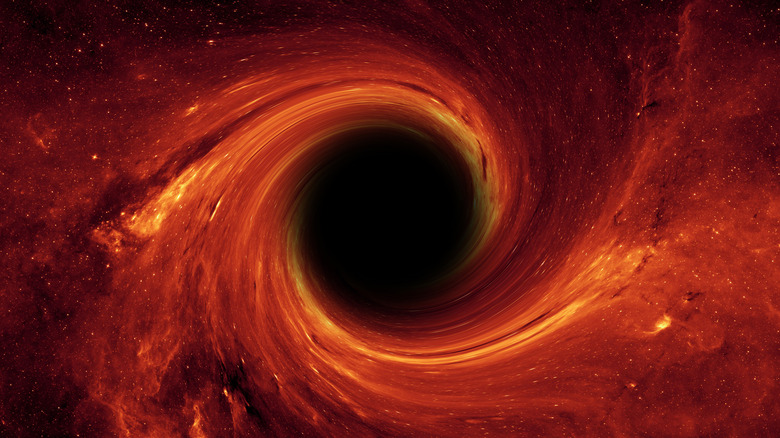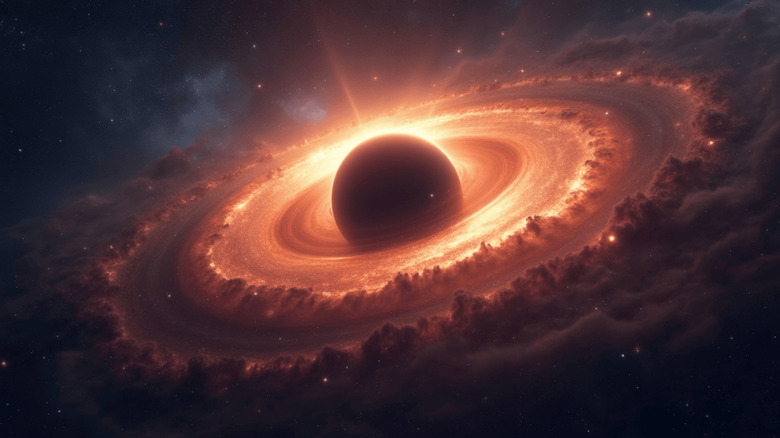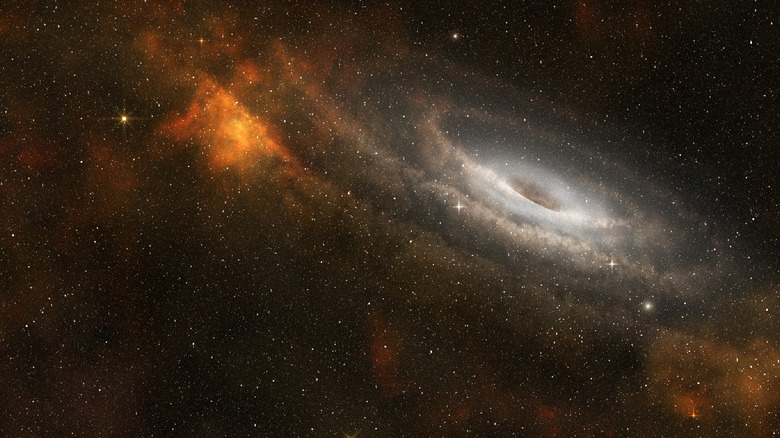We Just Discovered A New Class Of Black Holes (And They Weren't Easy To Find)
Black holes are one big mystery. Even the name, black hole, is a bit of a mystery in the sense that these fascinating cosmic objects are not holes at all. In fact, there is nowhere else in the universe where matter is more densely packed than in a black hole, which crams matter together until it collapses to a single point, known as a singularity. The "hole" element comes in due to the fact that black holes neither emit nor reflect light, and are therefore invisible. Thankfully, we're able to detect these objects due to their effects on their surroundings.
But finding black holes isn't always as simple as observing their effect on the area directly surrounding them. This is partly due to the fact that not all black holes are the same. There are actually three main categories, with stellar-mass black holes representing the smallest, intermediate-mass black holes sitting in the middle, and supermassive black holes being, well, the biggest. While the mass ranges that define these categories are rough approximations that are open to reassessment, typically, stellar-mass black holes have a mass of a few to hundreds of times that of the sun, while supermassive black holes have hundreds of thousands to billions of times the sun's mass. But intermediate-mass black holes, or IMBHs, are tricky to define, to say the least.
Scientists expect there to be black holes of every different size; intermediate-mass black holes should be formed when stellar-mass ones collide. In theory, these mid-range examples of would run from 100 to hundreds of thousands of times the sun's mass, but researchers have struggled to find examples. As such, IMBHs have become known as "missing-link black holes," with several potential examples identified but never confirmed.Now, however, researchers have discovered such intermediate objects using an extremely complex technique, and may even have discovered a new type of black hole in the process.
Researchers have identified intermediate-mass black holes billions of light-years away
Intermediate-mass black holes are important as they could hold the key to understanding how black holes grow over time. As such, any discovery in this area is exciting, but it's even more so when the technique used is so innovative.
Researchers working in the lab of assistant professor of physics and astronomy Karan Jani, who is also the founding director of the Vanderbilt Lunar Labs Initiative, analyzed data taken from the LIGO and Virgo observatories and published their findings in the Astrophysical Journal Letters. These gravitational‑wave detectors find ripples in spacetime lasting less than a half‑second — the type of event that occurs when two black holes collide. What makes the team's efforts so intriguing is that they were actually re-analyzing existing data from 11 candidate events recorded by LIGO-Virgo's third observing run. These were events that occurred as far as 37 billion light‑years from our planet, with the closest being 2.5 billion light‑years away.
Typically, intermediate-mass black holes are harder to confirm because the signal from gravitational waves resulting from their creation are in the low-frequency range. Detectors have a hard time separating these signals from ever-present background noise. But by using waveform models more advanced than anything applied to the data before, alongside a Bayesian algorithm called RIFT and artificial intelligence that helped clean up the background static, the researchers were able to filter out noise and confirm that five of the 11 events resulted in the creation of "lite" intermediate objects, which essentially means they discovered a new category of black hole.
We're a step closer to understanding intermediate-mass black holes
Despite the identification of several IMBHs, these mid-range black holes remain highly mysterious. Detectors such as LIGO are only able to record the final seconds of a black hole merger, which makes it very difficult to understand what exactly is going on prior to that brief moment and gain a full understanding of how intermediate black holes form. What's more, Earth-based detectors are still hindered by environmental or instrumental noise, making it incredibly difficult to pick out the low-frequency gravitational waves.
With this latest study, however, the researchers have shown that doing so could be far easier in future, and have even suggested ways in which future IMBHs could be identified and studied in more detail. Two more papers have laid out a plan for using the forthcoming Laser Interferometer Space Antenna (LISA) — scheduled for launch in the 2030s — to track intermediate black holes for much longer periods. LISA is set to orbit the sun and measure gravitational waves at lower frequencies, and should provide a unique opportunity to gain an even deeper insight into these "missing link" black holes, including how they form, grow, and move. Other suggestions for future research include lunar-based detectors which wouldn't have to contend with the kind of environmental noise that occurs on Earth.
There are no shortage of mysteries and myths surrounding black holes, but by far the most mysterious are the IMBHs, which astronomers believe could grow into supermassive black holes or simply represent the vestiges of the very first stars. Now, with this latest research and plans for more comprehensive studies in the near future, we're a step closer to understanding these fascinating "missing link" cosmic objects.


